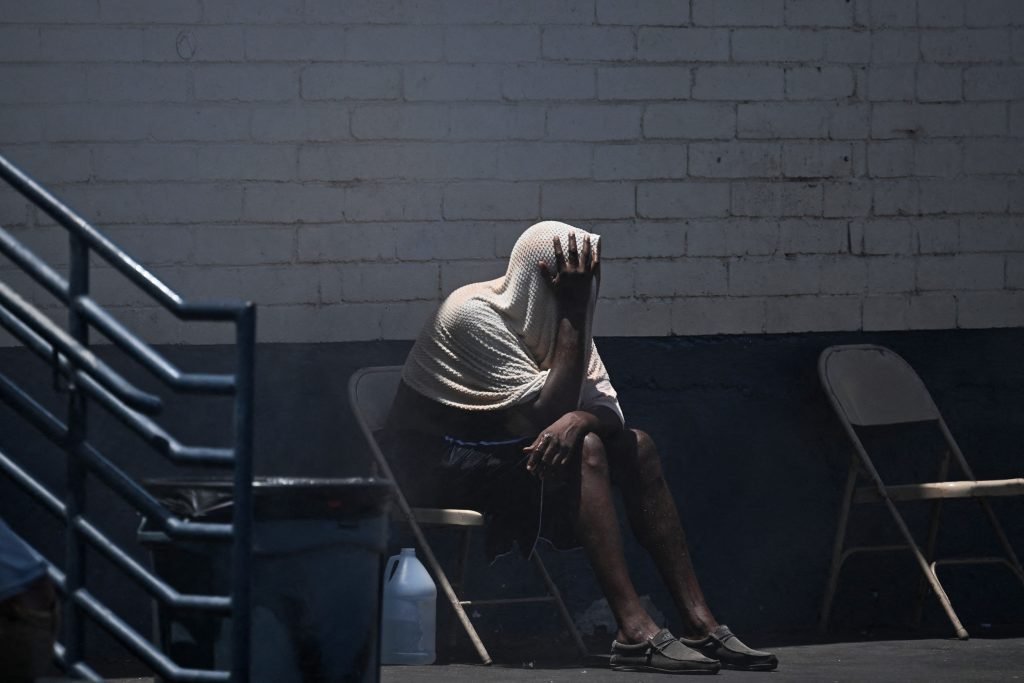At least 18 people have died from the heat in the Phoenix area this year, and another 69 deaths are under investigation, according to reports. weekly heat report The Maricopa County Public Health Department announced Wednesday.
The death toll recorded by July 15 points to significant risks from the heat, even in places like Phoenix, where residents are accustomed to extreme temperatures and public health officials are diligently addressing the issue. Data from the past few years show that heat deaths are intertwined with opioids and the housing crisis in the Phoenix area.
“We truly believe that all of these heat-related deaths are preventable,” said medical epidemiologist Dr. Nick Stave of the Maricopa County Public Health Department. “The numbers are on the rise and we clearly want to draw attention to this matter to make sure everyone can plan.”
Phoenix on Tuesday set a record for consecutive days of 110 degrees Fahrenheit heat. Nighttime temperatures did not drop below 97 degrees Fahrenheit, a new record, according to the National Weather Service.
According to the forecast, the southwest will stay hot and humid for at least another week. According to the agency, more than 80 million US residents are expected to experience a heat index above 105 degrees Fahrenheit this week. Four Corners, Texas, the Lower Mississippi Valley and South Florida are expected to experience even more record heat through the weekend.
The rate of heat-related hospital visits in the Phoenix area has risen sharply in recent weeks, according to a report Wednesday. Six more deaths were confirmed this week. Of the 18 heat-related deaths confirmed since April, four occurred indoors and involved “non-functioning” air conditioners or units that were not switched on.
Mortality data provide an incomplete initial view of the human health impact of heatwaves in the Phoenix area. Reporting and investigating heat mortality data can take weeks or months.
“We may not know exactly what’s going on during this heat wave,” Staab said. “It will take time to complete these investigations and ensure that all fatalities are accounted for.”
A report released in June said 425 heat-related deaths occurred in Maricopa County last year, an increase of about 25% from the previous year. In the cases for which such data are known, approximately 56% of heat-related fatalities involved people who had become homeless. Two-thirds of deaths were related to drug or alcohol use.
Combined with issues like the heat, homelessness and opioid abuse, “it could be a complete storm,” Staab said.
The Phoenix area has invested in heat relief. In the fall of 2021, the city of Phoenix hired Arizona State University associate professor Dave Hondura to lead the country’s first urban heat control room. The Maricopa Government Association coordinates his one of the most sophisticated networks of cooling facilities in the country. The county health department is revamping its reporting to ensure it captures heat-related deaths, and is one of the few departments to issue a weekly report on heat-related deaths.
So far, the number of heat deaths has been on a declining pace despite this year’s heat wave. Staab said a relatively cool June may have played a role in this statistic, but extreme temperatures are not required to kill.
“Historically, we’ve noticed that heat stroke deaths don’t always occur on days when heat advisories are in place. It’s not always the hottest days that are at risk. It’s hot all season,” he said, adding that the season in the Phoenix area runs from April to October. “For those at highest risk, the difference between 105 and 115 may not be that significant.”
For now, public services in Arizona’s big cities seem to be holding up. Officials in Tempe and Phoenix said water consumption in the cities did not exceed typical summer highs.
“This is what our system was designed for,” said Max Wilson, deputy director of Phoenix Water Services.
Recommended
Eric Iwersen, Tempe city’s director of sustainability and resilience, said electricity use in the area rose to record levels as people turned on their air conditioners.
Salt River Projects, the power company in the Phoenix and Tempe area, set new records for electricity demand for several days on July 14 and 15, according to company spokeswoman Erica Roelfs.
“So far this July, the system demand peak is nearly 5% higher than last year’s peak,” he said in an email, adding that there were no unplanned service interruptions for customers this month.
fix (July 19, 2023 at 3:51 PM ET): A previous version of this article misspelled the surname of the City of Tempe’s Director of Sustainability and Resilience. He’s Eric Iwersen, not Eric Iverson.
Evan Bush
Evan Bush is a science reporter for NBC News. You can contact him at Evan.Bush@nbcuni.com.
















